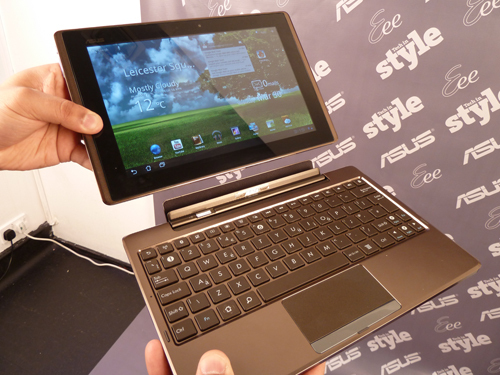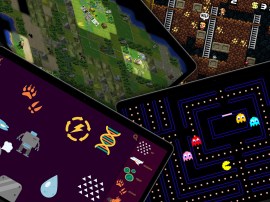Asus Eee Pad Transformer hands-on
With a name like the Transformer, of course Asus' latest Eee Pad is going to have a few tricks up its sleeve

Is it a tablet? is it a netbook? No, it’s the Eee Pad Transformer – a hybrid laptop/tablet with a 10.1-inch screen. It’s also one of the first tablets to hit the market running the delectable, and highly anticipated Android 3.0 Honeycomb.
One of the main gripes from tablet naysayers about this particular breed of portable computing is their inability to replace laptops and enable you to really knuckle down and get some work done. The Transformer offers the best of both worlds. Thanks to the bolt on keyboard, it can be used as an independent tablet, or docked for a more traditional laptop approach.
You can essentially use the tablet for your entertainment needs – so, watching movies, browsing the web and telling everyone what you had for lunch on Twitter while out and about or at home. And when you’re ready to do some work just connect them back together again and get a’ typing. There’s even a touchpad, so you don’t have to constantly reach out to the touchscreen.
In terms of build quality, it looks and feels solid, and the tactile pattern on its outer shell is rather attractive and also means it won’t unwittingly slip out of your hand. It’s also surprisingly lightweight, individually and when docked – so it won’t put too much strain on your wrists. And in case you’re wondering, the tablet is just under 13mm thick.
Both components connect with a reassuringly sturdy click. We managed to slide it in place and pop it back out again without any problems.
You’re looking at a Gorilla Glass screen, with a 1280 x 800 pixel screen res. Oh, and 1080p video looks goo-oood.
Specs-wise, it’s packing a front-facing 1.2MP camera and a rear 5MP snapper, two USB ports, Wi-Fi, Bluetooth, a card reader and dual core Tegra 2 processor. You also get to revel in the joys of Flash 10.2. And if you want to make use of hi-def on the big screen, just hook your gogglebox up to the tab’s mini HDMI port.
With 3D stereo audio quality, its speakers appeared pretty impressive, sounding rather triumphant against the cacophony of excitable journalists.
As we know, Honeycomb looks stunning, but Asus have also put their own stamp on with its Waveface interface, which offers features like an eBook reader, complete with the page-turn graphics.
Individually, the tablet and keyboard throw up 8 hours of battery life – so 16 hours combined – but what’s really interesting is the keyboard’s ability to give the tablet a power boost when it runs out of juice. Sounds like this will come in handy during a long-haul flight.
It comes in two flavours – 16 and 32GB. On it’s own, the tab will set you back £380 and £430, respectively. Throw the keyboard in and the price goes up to £430 for the 16GB model. Asus are yet to release the price point for the bigger model, but we suspect we’ll find out soon as it’s out on April 6.
Also
CES 2011 – Asus Eee Slate and 3 Eee Pads revealed



